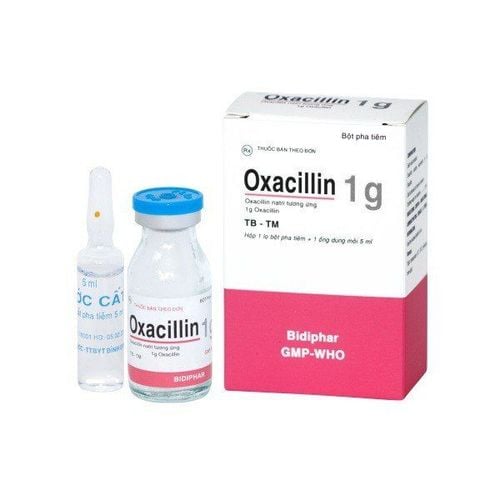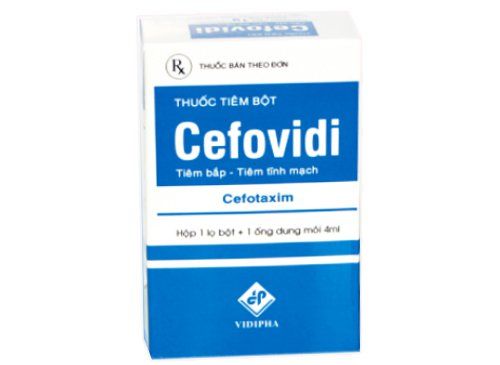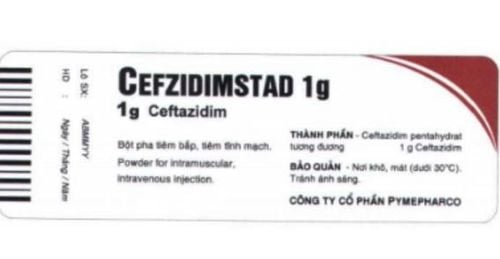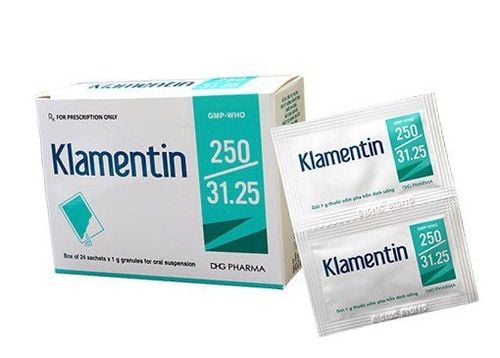This is an automatically translated article.
The drug Maxfecef belongs to the group of antibacterial drugs containing the antibiotic Ceftriaxone as the active ingredient. Maxfecef is indicated in the treatment of inflammatory diseases such as sepsis, meningitis, intra-abdominal infections... Let's learn about the uses and notes when using Maxfecef through the article below.1. Uses of the drug Maxfecef
“What is Maxfecef?” . Maxfecef contains the active ingredient Ceftriaxone Sodium Trisequihydrate, which is prepared in the form of a powder for intramuscular or intravenous injection. Maxfecef is indicated in the following cases:
Meningitis ; Sepsis; Lyme disease; Abdominal infections; Skin and soft tissue infections, wounds, bone and joint infections; Infections in patients with weakened immune systems (used in combination with other groups of antibiotics); Urinary tract infection, kidney infection; Pneumonia, ear - nose - throat infection, pneumonia; Genital tract infections such as gonorrhea; Prophylaxis before surgery in patients resistant to 1st and 2nd generation Cephalosporins.
2. Dosage of the drug Maxfecef
Dosage of Maxfecef is prescribed by the treating doctor based on the patient's condition, age and ability to respond. The recommended dose of Maxfecef is as follows:
Adults and children over 12 years old: The recommended dose is 1-2g/time/day for intramuscular or intravenous injection. In severe infections, the dose can be increased to 4g/day in 2 divided doses. Duration of treatment depends on the course of the disease and the patient's clinical response, the dose should be maintained for at least 48-72 hours after the patient's fever is gone or the bacteria are eliminated.
Patients with hepatic impairment: No dose adjustment of Maxfecef is required in patients with hepatic impairment;
Patients with renal impairment: No dose adjustment of Maxfecef is required in patients with renal impairment with normal liver function. The dose should be reduced in patients with severe renal impairment (creatinine clearance less than 10ml/min) to no more than 2g/day.
Elderly: There is no need to adjust the dose of Maxfecef in geriatric patients.
Infants and children under 12 years of age: The recommended dosage is as follows:
Newborns up to 14 days old: The recommended daily dose is 20-50mg/kg body weight, do not exceed 50mg/kg and No dose adjustment is required in preterm neonates. Contraindicated to use Maxfecef in infants being treated with calcium infusion; Neonates from 15 days old to 12 years old: The recommended daily dose is 20-80mg/kg body weight. Children weighing more than 50kg can be considered the same dose as adults; Treatment of meningitis in children: The recommended starting dose is 100mg/kg body weight and not more than 4g/day. The dose is then reduced when it is determined that the causative agent has been eliminated. The minimum duration of treatment to be effective is 4 days for Neisseria Meningitidis, 6 days for Haemophilus Influenzae and 7 days for Streptococcus Pneumoniae; Treatment of Lyme disease: The recommended dose in children and adults is 50mg/kg/day, up to a maximum of 2g/day.
Treatment of gonorrhea: Single dose of 250mg Maxfecef.
Prophylaxis before surgery: Take a single dose of 1-2g Maxfecef 30-90 minutes before surgery to prevent the risk of infection.
Maxfecef solution should be used immediately after reconstitution. The stability of the drug solution is maintained for 6 hours after reconstitution at room temperature, the color of the solution ranges from bright yellow to dark yellow depending on the concentration and storage time.
For intramuscular injection, the solution is made from 1g of Ceftriaxone mixed in 3.5ml of 1% Lidocaine Hydrochloride solvent, then injected into a large muscle mass. It is not recommended to inject large amounts of injection solution (greater than 1g) into the same site. Lidocaine solution for injection should not be administered intravenously.
3. Side effects of the drug Maxfecef
Maxfecef may cause some unwanted effects as follows:
Gastrointestinal disorders: Diarrhea, loose stools, vomiting, nausea, stomatitis, glossitis; Hematological changes: Leukopenia, eosinophilia, agranulocytosis, thrombocytopenia, hemolytic anemia; Skin reactions: Atopic dermatitis, rash, urticaria, edema, Stevens - Johnson syndrome, Lyell syndrome; Bacterial and fungal superinfections, pseudomembranous colitis caused by Clostridium difficile; Injection site reactions: Painful swelling, phlebitis; Rare side effects: Increased liver enzymes, headache, dizziness, biliary sludge, increased serum creatinine, oliguria, fever, genital thrush, tremor and biliary or anaphylactoid reactions Precipitation of calcium salts – Ceftriaxone has been observed in the gallbladder (mainly in patients treated with doses higher than the standard dose). Patients should discontinue use of the drug and notify their physician in the event of adverse effects. undesirable effects of treatment with Maxfecef.
4. Notes when using the drug Maxfecef
4.1. Contraindications Contraindicated using Maxfecef in the following cases:
Patients with hypersensitivity to Ceftriaxone, beta-lactam antibiotics or any ingredient of Maxfecef; Babies born prematurely, newborns with jaundice. 4.2. Use caution when using Maxfecef in the following cases:
Ceftriaxone as well as other cephalosporin antibiotics has a risk of causing anaphylaxis, especially in patients with no known history of allergy to the drug. . Hemolytic anemia has been observed in patients treated with cephalosporins including the antibiotic ceftriaxone. Therefore, during treatment with Maxfece, if the patient develops anemia, the risk of ceftriaxone should be checked and the drug should be discontinued if the risk is identified. Clostridium difficile-associated diarrhea has been reported during treatment with Maxfecef. Therefore, patients should be periodically tested for the risk of Clostridium difficile infection (CDAD). In case of suspected or confirmed CDAD infection, Maxfecef should be discontinued and surgery considered when clinically indicated. Similar to other antibiotics, bacterial reinfection due to drug resistance can occur in patients. For pregnant women: Ceftriaxone crosses the placental barrier, the safety and effectiveness of the drug when used in pregnant women have not been specifically established. Animal studies have shown that Ceftriaxone is not teratogenic or embryotoxic. Lactation: Ceftriaxone is excreted in low concentrations in breast milk, so caution is recommended when administered to lactating women. Interactions with Calcium-containing preparations: Cases of fatal reactions due to calcium-ceftriaxone precipitation in the lungs and kidneys have been described in neonates less than 1 month of age. At least one of these cases received cefiriaxone and calcium at different times and through different intravenous lines.
5. Maxfecef drug interactions
The active ingredient Ceftriaxone is competitive when used concurrently with Chloramphenicol.Diluents containing Calcium must not be used as solvents to dissolve Ceftriaxone.
Do not use the same line of drug Maxfecef with Amsacrin, Fluconazole, Vancomycin, Aminoglycoside.
Ceftriaxone can reduce the effectiveness of oral hormonal contraceptives, so patients on treatment with Maxfecef should use an additional suitable method of contraception in addition to oral.
Maxfecef may cause false positive results for Coombs test, blood galactose test.
Drug interactions occur that reduce the therapeutic effect of Maxfecef, increasing the risk of unwanted effects. Therefore, patients need to inform the treating doctor of any drugs and supplements they are using before taking Maxfecef.
The above is important information about the drug Maxfecef, before using it, patients need to know how to use it, if there are any problems related to the drug, they can discuss it with their doctor for instructions. suitable determination.
Please dial HOTLINE for more information or register for an appointment HERE. Download MyVinmec app to make appointments faster and to manage your bookings easily.













